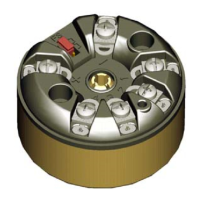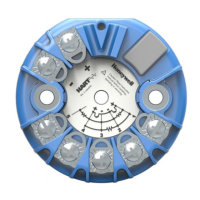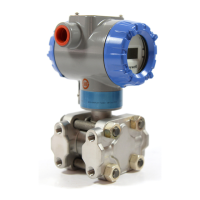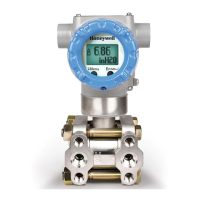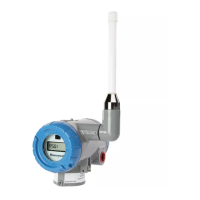- Sensor type: TC, RTD, ohms or mv as
configured above
- Sensor ID: Specific sensor type as configured
above
- LRL, URL: Lower and Upper Range Limits
- LTL, UTL: Lower and Upper Transducer Limits
- Sensor 2 Install Date: A one-time writable date
used for Advanced Diagnostics on the Sensor
health.
- Lower and Upper Calibration Points: Enter the
Calibration values to be used during the LRV
Correct and URV Correct procedures
- Sensor 2 Bias: Enter any desired bias value to
be used for Sensor 2 measurement. Bias is
generally applied to compensate for input drift
due to sensor deterioration. Final Sensor 2
value = Sensor 2 input + Sensor 2 Bias.
Loop Controlled By: Displays the Sensor(s) that are
currently controlling the loop, based on the selection of
the Loop Control mode.
PV Delta: The difference in measurement between
Sensor 1 and Sensor 2 (Sensor 1 value– Sensor 2
value)
Delta Limit: Enter the desired limit value for the PV
Delta. When PV Delta exceeds the limit, the PV
Excess Delta Alarm will be triggered.
Sensor Scratch Pad: Enter any notes desired
pertaining to Senor 1.
Change Loop Control: Change the Loop Control mode
to any of the following:
- Average (PV will be the average of Sensor 1
and Sensor 2 values)
- Differential (PV will be the difference of Sensor1
value – Sensor 2 value)
- Sensor 1 (PV will be the Sensor 1 value only)
- Sensor 2 (PV will be the Sensor 2 value only)
- Redundant (Configuration of Damping for
Bumpless Trasnfer may be required for the
Redundant option. PV will be the Sensor 1
value unless Sensor 1 fails. If Sensor 1 fails,
control will shift to Sensor 2. )
- Split Range (Configuration of a Mid-Range
Value (MRV), Damping for Bumpless Transfer
and Hysteresis band is required for the Split
Range option. PV will be the Sensor 1 value
and Output will be ranged from LRV to MRV,
until the Sensor 1 input exceeds the MRV value,
allowing for hysteresis. Control then shifts to
Sensor 2 and Output is ranged from MRV to
URV. Control will shift back to the Sensor 1 and
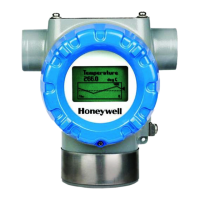
